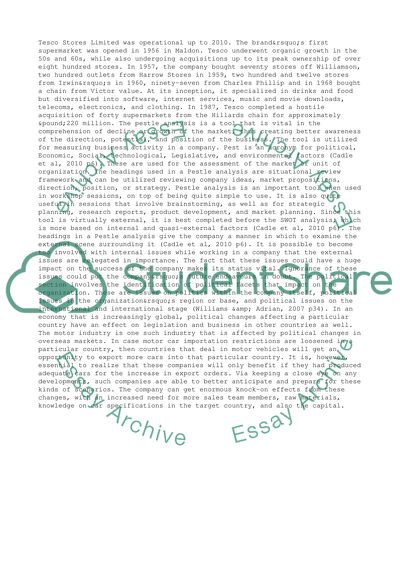Cite this document
(“Tesco Company Pestle Analysis Essay Example | Topics and Well Written Essays - 2000 words”, n.d.)
Tesco Company Pestle Analysis Essay Example | Topics and Well Written Essays - 2000 words. Retrieved from https://studentshare.org/business/1452345-choose-a-business-organisation-in-buckingham-or
Tesco Company Pestle Analysis Essay Example | Topics and Well Written Essays - 2000 words. Retrieved from https://studentshare.org/business/1452345-choose-a-business-organisation-in-buckingham-or
(Tesco Company Pestle Analysis Essay Example | Topics and Well Written Essays - 2000 Words)
Tesco Company Pestle Analysis Essay Example | Topics and Well Written Essays - 2000 Words. https://studentshare.org/business/1452345-choose-a-business-organisation-in-buckingham-or.
Tesco Company Pestle Analysis Essay Example | Topics and Well Written Essays - 2000 Words. https://studentshare.org/business/1452345-choose-a-business-organisation-in-buckingham-or.
“Tesco Company Pestle Analysis Essay Example | Topics and Well Written Essays - 2000 Words”, n.d. https://studentshare.org/business/1452345-choose-a-business-organisation-in-buckingham-or.


